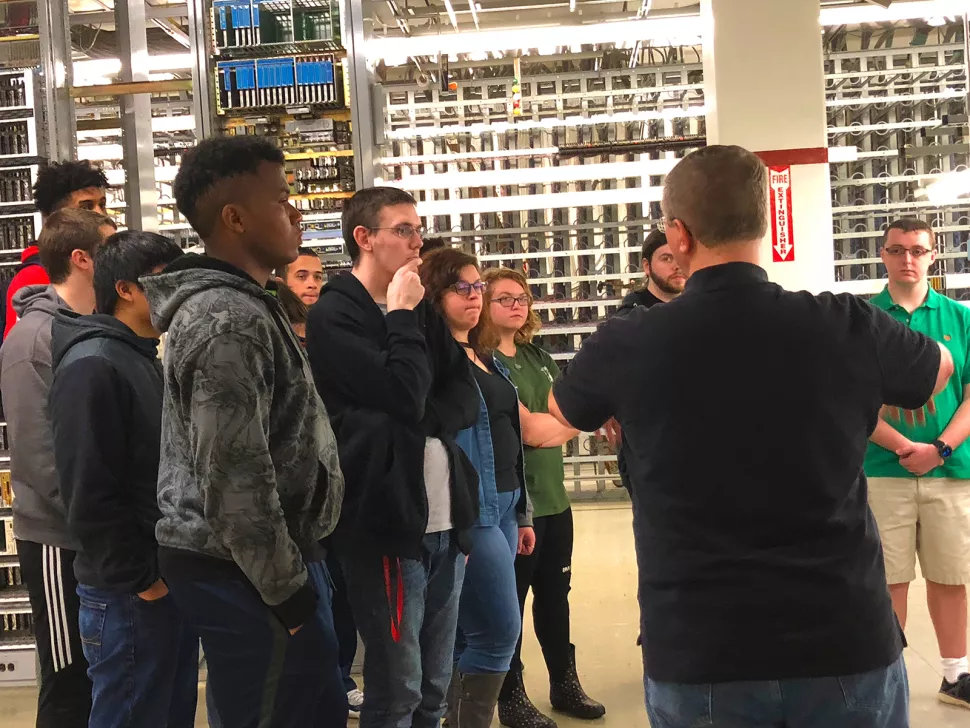How It's Done: Digital Forensics Master of Science Degree
Creating digital forensics analysts, detectives of the cyber world

Cybersecurity is clearly a growing field, with endless challenges. When things go south, digital forensics experts secure the cyber scene, collect evidence, and solve the whodunit. One Kentucky university is training these detectives of the digital world.
We chat with Ed Zuger, Associate Professor and Director of Digital Forensics, about the creation and evolution of this unique masters program.
Who: University of the Cumberlands, School of Computer and Information Sciences, ucumberlands.edu
Where: Williamsburg, KY
What: Master of Science in Digital Forensics (MSDF)
In 2014, the University of the Cumberlands, under the direction and force of Dr. Donnie Grimes, saw the severe gap between industry and government’s cybersecurity needs and the pittance of professionals, particularly leaders, with such distinct skills. We created our M.S. in Information Systems Security and within three highly successful years grew to over 100 faculty helping thousands. The natural academic and practical progression—“What next after all these cyber pros inevitably cannot stop the black hats?” It’s the uniquely talented digital forensics experts who secure the digital scene, collect evidence, and solve the whodunit. The MSDF was born.
There’s no point for us at UC to teach to our fancy, so I identified the market’s need for digital forensics analysts and made sure the necessary hard skills were balanced with complementary soft skills to create professionals, leaders, innovators who want to practice and apply their service. Atop the main MSDF curriculum of hard skills, such as mobile forensics or malware analysis, UC’s MSDF students learn the regulatory domain. They take a deep dive into evidence law; leadership and communications attuned to information security environments. It’s an education with a substrate of ethics and growth into servant-leaders.
Tools and ideas to transform education. Sign up below.
Though we have a beautiful main campus in the bucolic Appalachian Foothills (and satellite campuses in D.C., Seattle, and Dallas-Fort Worth) all of these graduate-level, School of Computer and Information Sciences programs are available online.
Positive Results
We’re securing your information security and privacy, first and foremost. It’s the DF version of cops chasing robbers. We’re expanding students’ opportunities in cybersecurity and IT, drawing in students with biology, real estate, and legal backgrounds to join forces with the techies and security nerds. A forensics investigation, at its base, follows the scientific process, or in a more entertaining view solves a puzzle. That, in the end, is what students become. Smart, efficient, courtroom-ready problem solvers.
Some graduates land in law firms using digital forensics to solve divorce and other civil disputes. Others enter the corporate world where keeping internal fraud, waste, and abuse out of the public eye—and operating securely in the global minefield of networks—are critical to share value. One of the first to earn the degree became a U.S. Secret Service special agent. (She’s my go-to exemplar with a biology B.S. whenever non-tech students are nervous about getting into the MSDF at UC.)

Biggest Challenge
Slow growth. Students might have a sense of the field from TV or films, but we had to really polish how we discussed digital forensics with prospective students. We have a worldwide student body so the messaging language needed to be particularly clear.
We now have a formal advisory board of talented program directors (of complementary degrees at Cumberland) who share their diverse academic experience. Sappy as it sounds, it’s the proverbial group effort that fixes things at this level.
Pro Tips
First, know that you can’t take the reins, batten down in your office and come out a couple months later, “program-in-a-can.” Build a team and immerse yourselves into the cybersecurity community. We’re surprisingly small—insular almost, but a very collegial bunch. After all, when your network gets hit, we’re all connected down-or-upstream. We’ll help you, help us.
Identify and perfect some standards to create the program skeleton. These will ultimately become your courses and learning outcomes. Make sure the institution’s leadership understands, even champions, the program. We are blessed at UC—if you do the groundwork with students’ educational welfare in mind and can conform to the mission, there’s a green light coming. This support makes all the difference.
Finding Funding
Successful internal budgetary proposal, alongside the academic proposal, proffered to our curriculum committee.
Tech Tools
Many of our DF tools are open source. By the time the student gets to my capstone project and conducts an actual forensics examination, they have a useful toolkit.
The federal government provides “dummy” hard drives and data sets to investigate. Global academicians create simulations and solutions for practice. The students “defend” their investigation via Zoom. We have encountered forensic findings from publicly acquired devices that cause me to contact state or federal law enforcement, C-level leaders of organizations, or other need-to-know actors.
Sascha has nearly two decades of experience as a freelance journalist writing for national magazines, including The Washington Post, LA Times, Christian Science Monitor, National Geographic Traveler, and others. She writes about education, travel and culinary topics.

